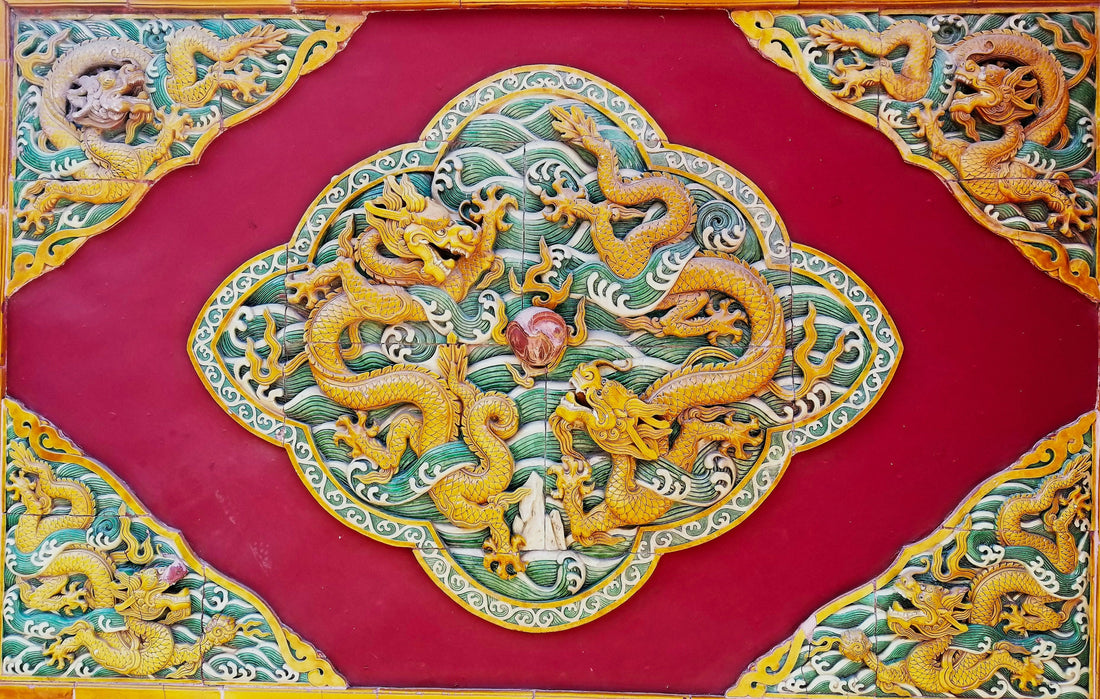
The Use of Incense in Chinese Culture
The moment a delicate trail of smoke curls into the air from a stick of incense, time seems to slow. In Chinese culture, incense is more than just fragrance—it's a symbol of harmony, spirituality, and a deeply rooted connection between humanity, nature, and the cosmos.
Used for centuries in temples, homes, and scholarly circles, incense is part of China's rich cultural heritage. From Daoist rituals to Buddhist prayers, ancestral offerings to scholarly meditation, incense weaves through Chinese history as a tool of presence, reverence, and peace.

The Origins of Incense in China
The use of incense in China dates back to at least the Shang Dynasty (c. 1600–1046 BCE). Archaeological finds suggest that early Chinese civilisations burned aromatic woods and herbs in ritual offerings to gods and ancestors.
The practice truly flourished during the Han Dynasty (206 BCE – 220 CE), when incense was imported along the Silk Road from India, Southeast Asia, and Arabia. Fragrant materials like agarwood (沉香 chénxiāng), sandalwood, clove, and frankincense became highly prized.
By the Tang and Song Dynasties, incense was deeply integrated into spiritual and scholarly life, influencing art, poetry, and medicine.
Incense in Daoism and Buddhism
Incense holds deep spiritual importance in both Daoism and Chinese Buddhism. It is used to:
- Purify the space before prayer or ritual
- Call upon deities or spirits
- Express reverence and devotion
- Accompany chants and meditation
In Daoist temples, incense is believed to create a bridge between heaven and earth, allowing messages and prayers to ascend. In Buddhism, incense offerings are an essential part of daily rituals and festivals, symbolizing moral virtue, clarity, and impermanence.
Burning three sticks of incense is common in both traditions, representing the Three Treasures in Buddhism (Buddha, Dharma, Sangha) or Heaven, Earth, and Humanity in Daoism.
Ancestral Worship and Daily Life
In Chinese homes, incense is traditionally used in ancestor worship, a key practice in Confucianism and folk religion. Family altars often feature incense burners where sticks are lit during festivals, weddings, funerals, or regular offerings.
Lighting incense for one’s ancestors expresses filial piety (孝 xiào)—a core Confucian value. The smoke is thought to carry prayers and greetings to loved ones who have passed.
Beyond religion, incense is also burned:
- During Chinese New Year
- In business openings for luck
- To cleanse bad energy
- As part of traditional Chinese medicine or relaxation
Incense and the Chinese Literati
During the Song and Ming dynasties, incense became a refined part of scholarly and artistic culture. Known as xiangdao (香道), or "the way of incense," it was considered one of the four elegant pursuits, alongside tea (茶), calligraphy (书), and painting (画).
Scholars would burn incense while writing poetry, playing guqin, or meditating. Special incense tools—like burners, ash presses, and curved tongs—were crafted with the same care as tea sets or ink stones.
In this context, incense was not just a scent—it was a state of mind: calm, focused, and in harmony with nature.
Forms of Chinese Incense
Chinese incense comes in various shapes and styles, each suited to specific settings:
- Stick incense (线香): Often thicker than Japanese incense, used in temples and homes
- Coil incense (盘香): Long-burning and often hung in temples for days of continuous scent
- Cone incense (锥香): Used in both home and ceremonial contexts
- Loose incense powders: Burned in censers during formal rituals
The materials vary widely, but traditional blends often feature agarwood, sandalwood, frankincense, borneol, star anise, cinnamon, and clove.
Meaning and Symbolism
Incense in Chinese culture is rich with layered meaning:
- Smoke as a bridge between worlds: earthly and spiritual
- Scent as an offering to ancestors, gods, or guests
- Burning incense as self-cultivation—a way to train patience and presence
- Fragrance as moral character: Subtle, enduring, and noble
The entire act—from lighting the incense to watching it burn—is meditative, reminding us of life’s fleeting beauty and the importance of grounding ourselves in the present moment.
Conclusion: A Timeless Fragrant Ritual
In China, incense is not just burned—it is respected, experienced, and remembered. It drifts through temples and living rooms, art studios and marketplaces, connecting the past with the present, the body with the spirit.
Whether used to honor ancestors, welcome the divine, or simply find peace in a busy world, incense continues to be a quiet but profound part of Chinese life.
